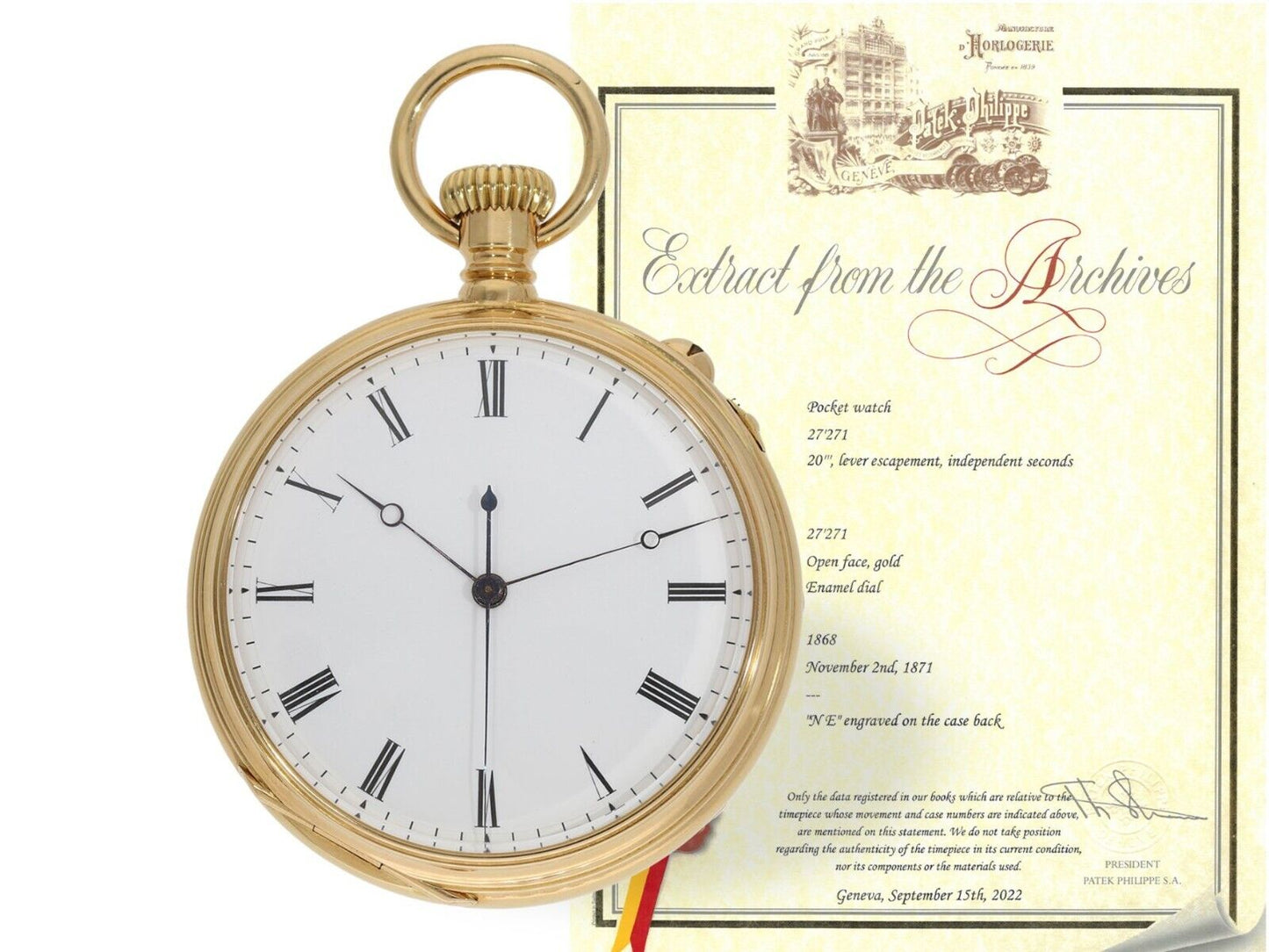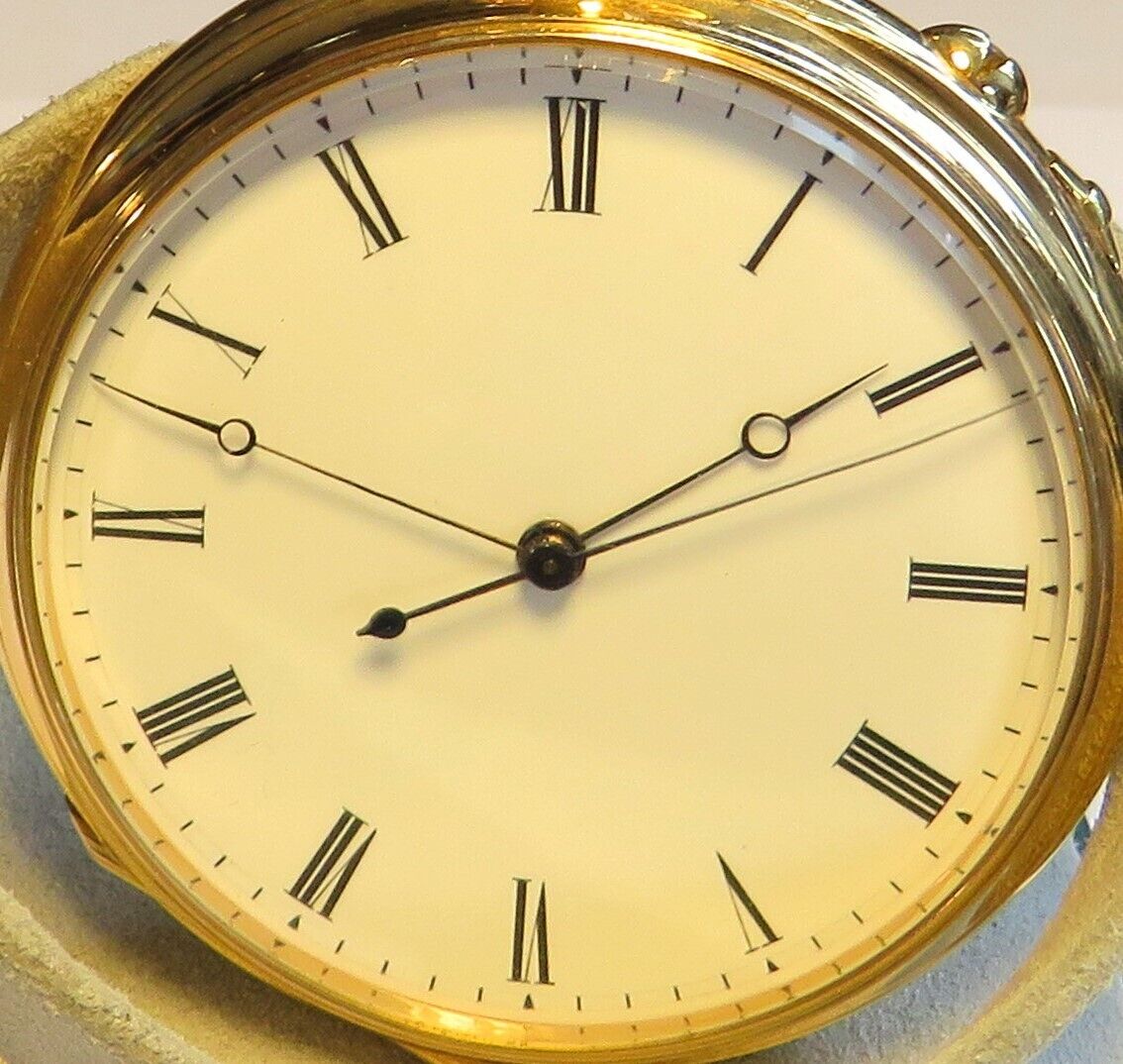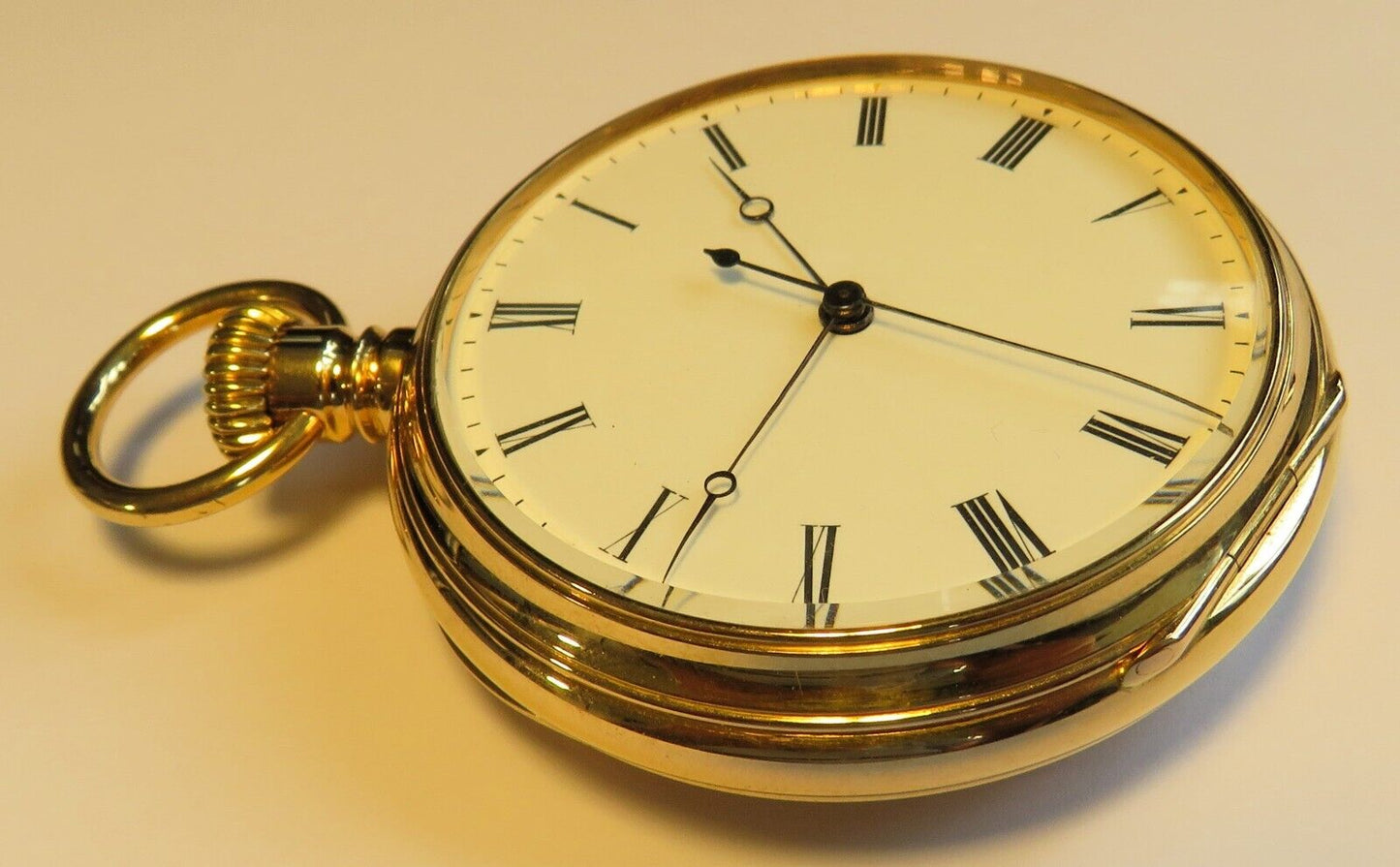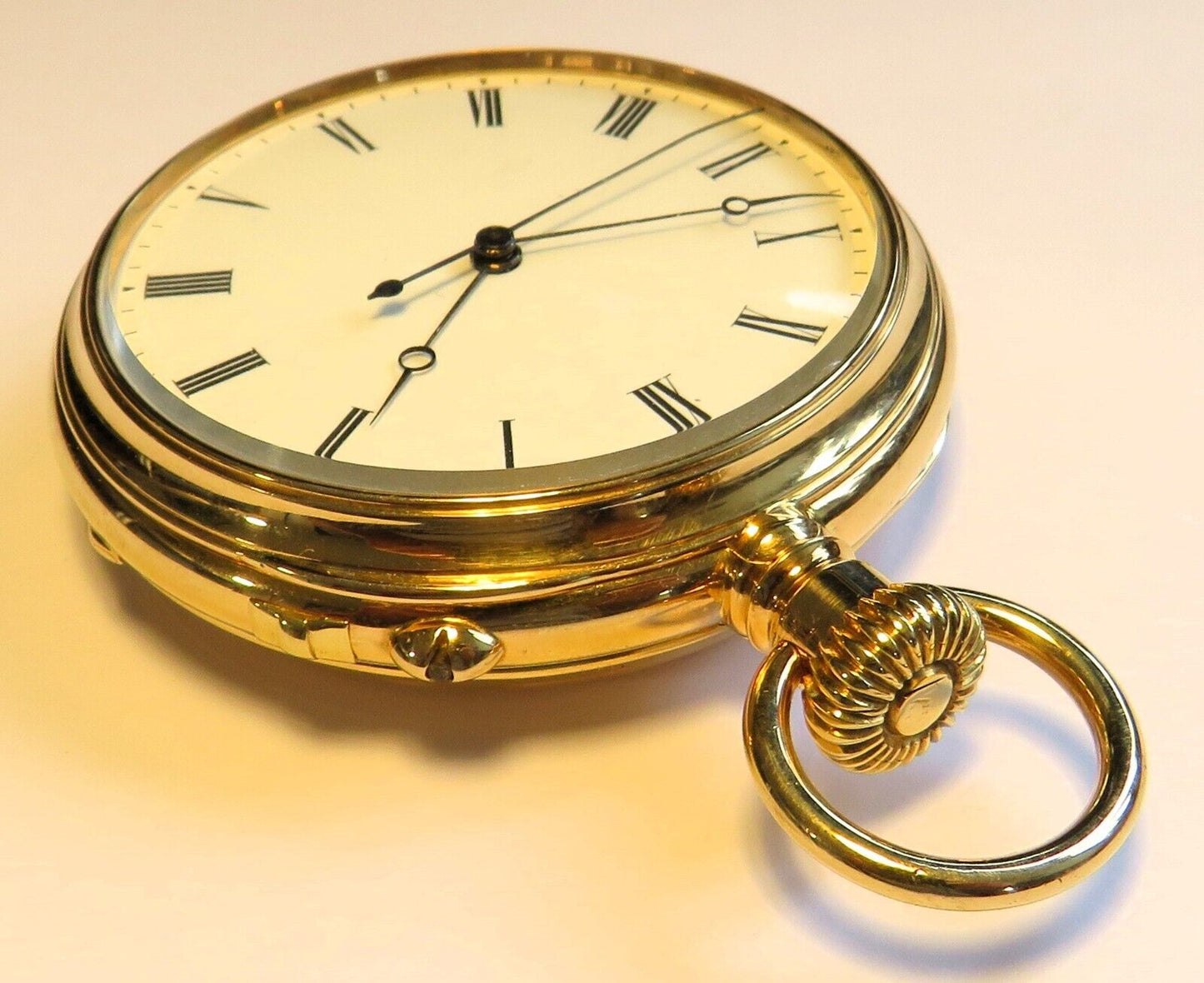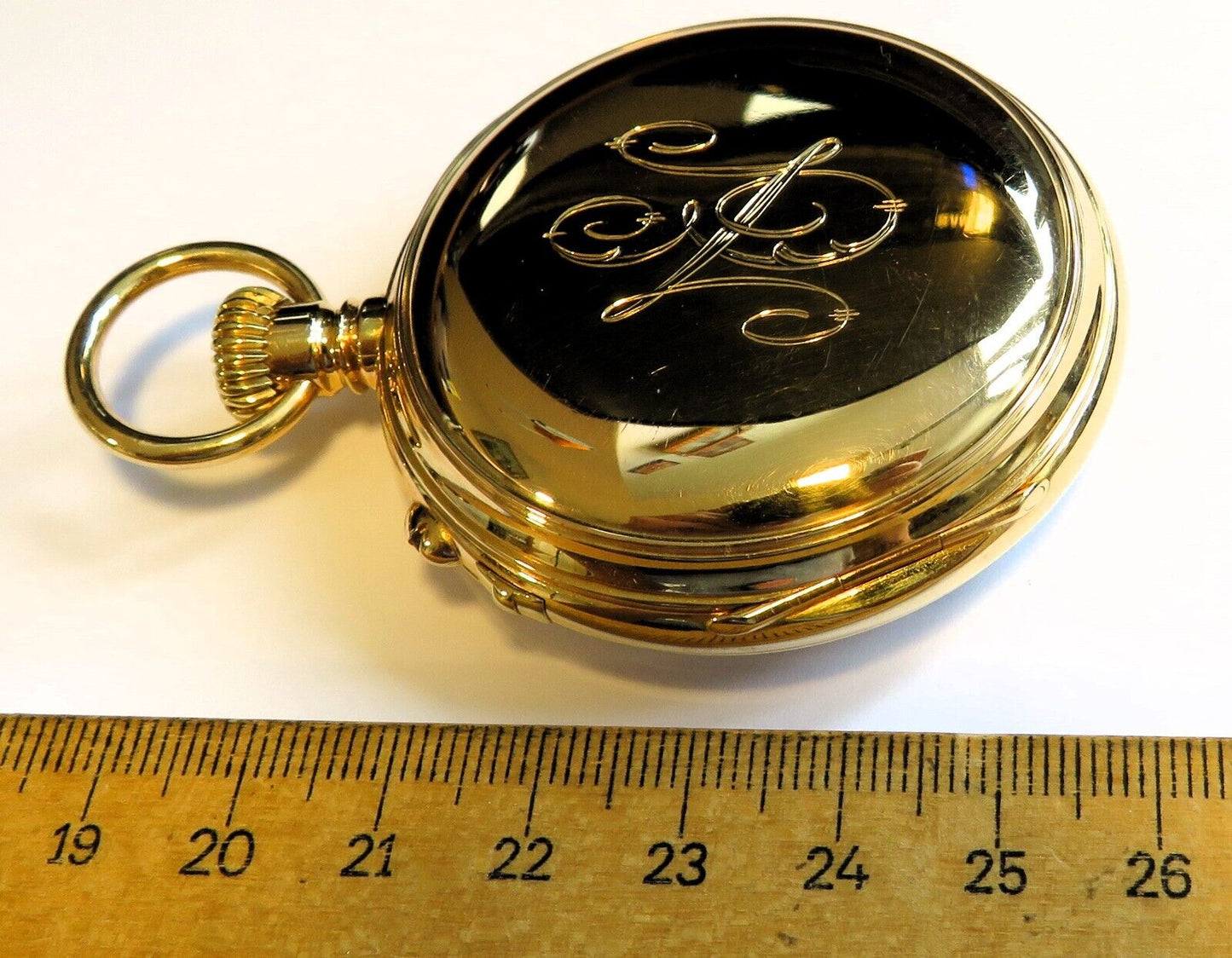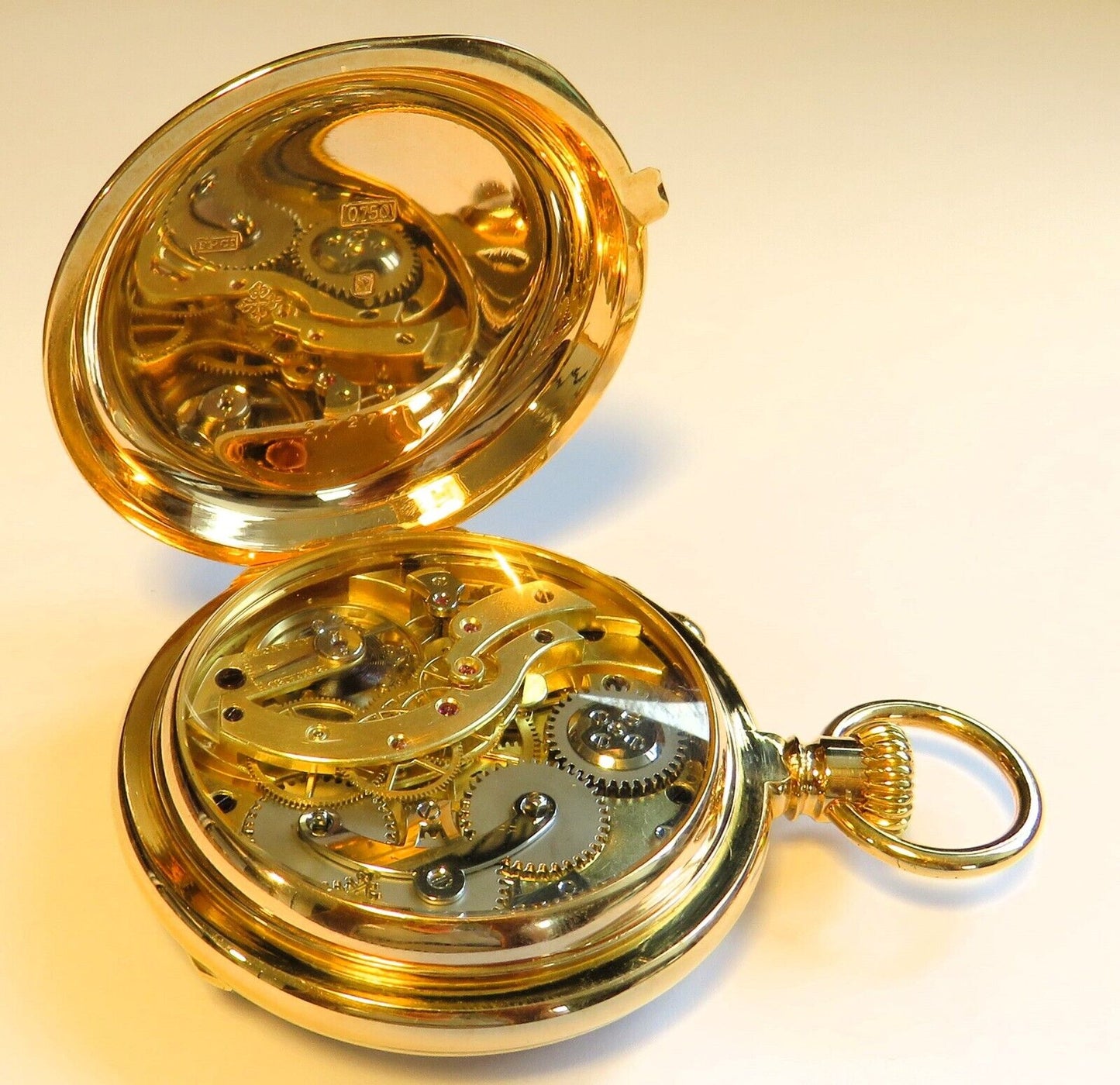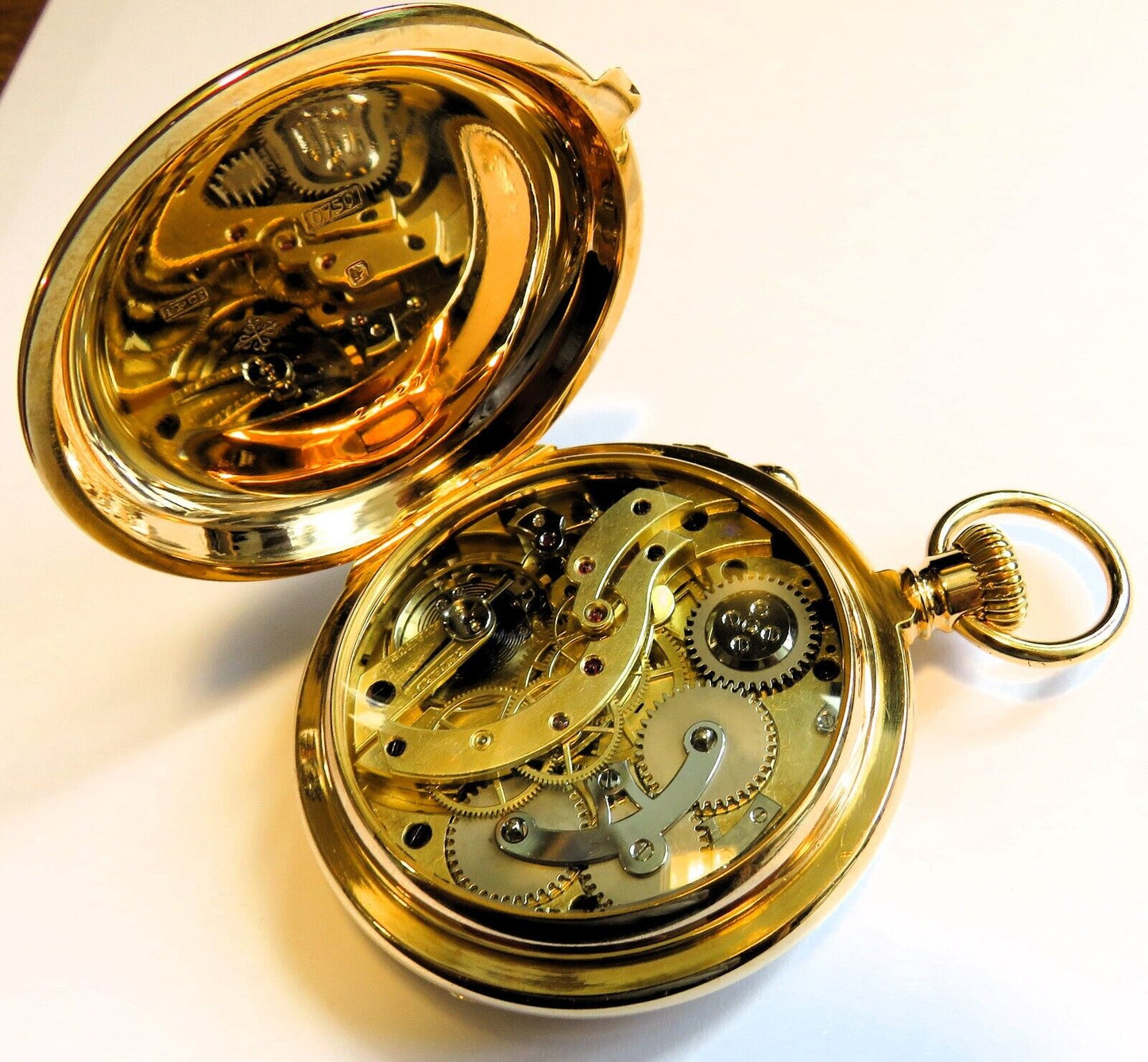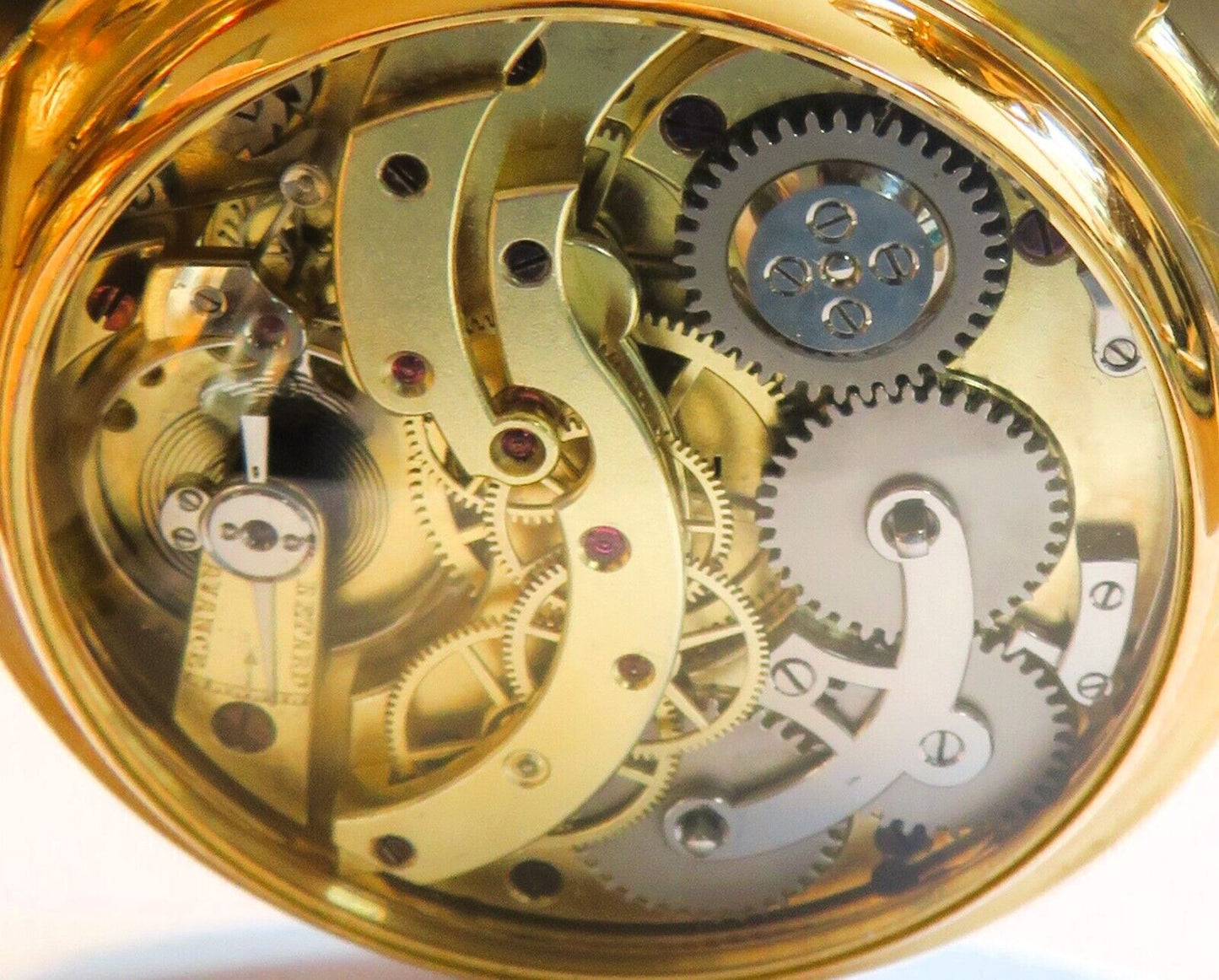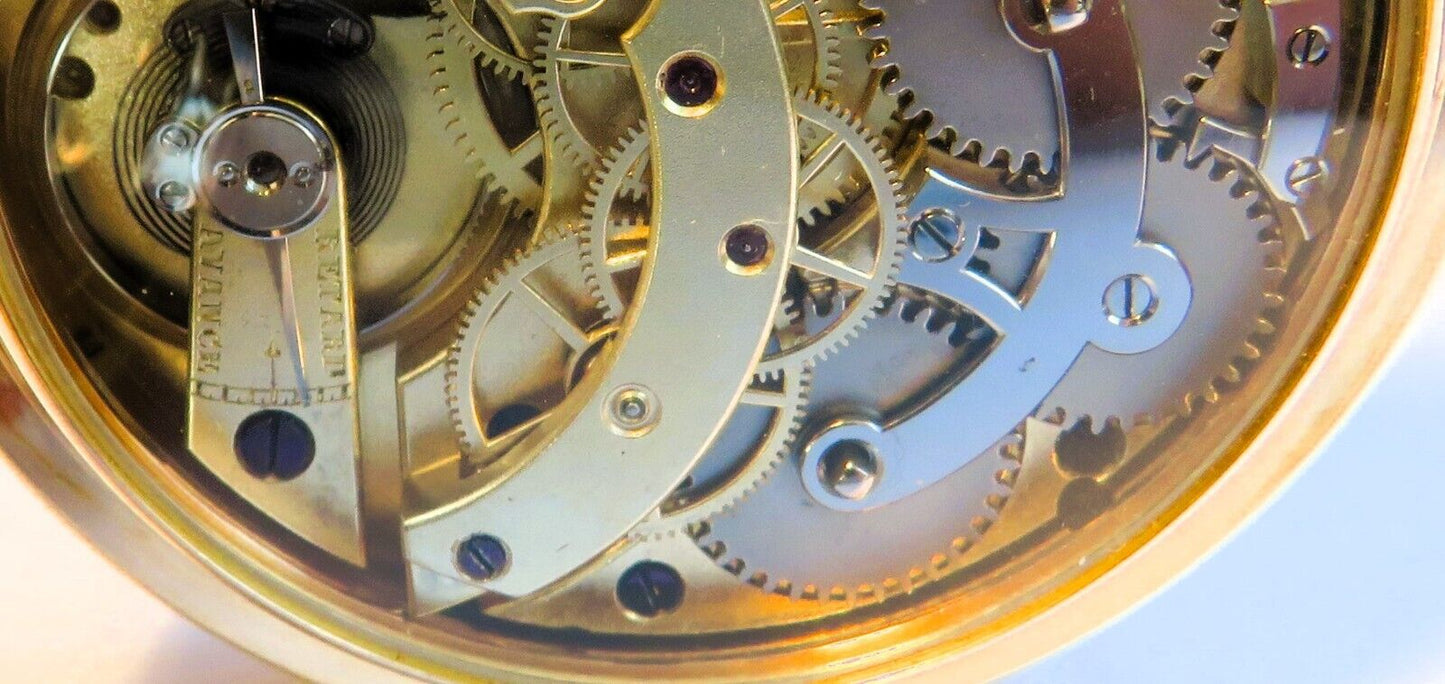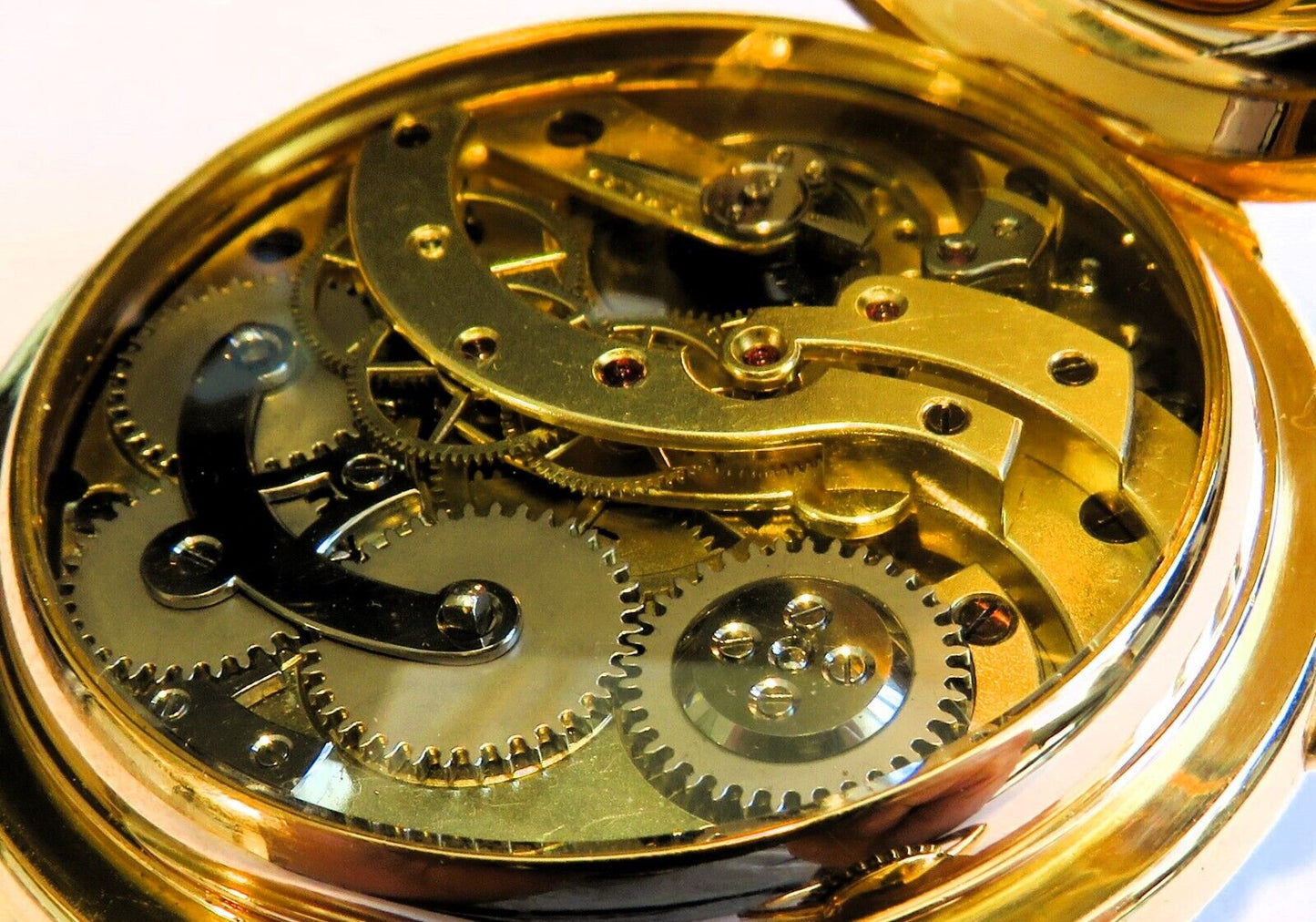Patek Philippe
Unique! PATEK PHILIPPE museum-quality SECONDE MORTE, experimental series from 1868 NO. 27271
Unique! PATEK PHILIPPE museum-quality SECONDE MORTE, experimental series from 1868 NO. 27271
Couldn't load pickup availability
The subject of this offer is an absolutely sensational, museum-worthy artifact of the luxury watch manufacturer worldwide: Patek Philippe, one of the rarest Patek Philippe watches ever, as only once every decades one comes onto the market
Video of the Second Morte complication: www.youtube.com/watch?v=BMuFuxOmyPA
A possibly unused Second Morte test model with existing family register extract to prove authenticity
To demonstrate the value of this museum artifact, it should be mentioned that a largely identical sister model on November 11, 2001 - this was before the worldwide price explosion of luxury watches, especially from Patek Philippe, of which several artifacts have since exceeded the double-digit million threshold in international auctions - achieved a hammer price of fabulous
399,500 Swiss francs = 417,000 euros
If you add the 30% commission surcharge, the buyer (24 years ago!!!) paid 520,000 Swiss francs / 543,000 euros plus VAT on the commission.
This Second Morte experimental series with two mainspring barrels and thus an independently startable central second hand (Second Morte) was never produced in series. The model is so rare that a few world-famous examples are on display at the Patek Philippe Watch Museum in Geneva.
Patek Philippe is the world's finest and most valuable watchmaker, whose complicated pocket watches regularly fetch seven-figure hammer prices at specialist auctions. To our knowledge, a single example of this miniature experimental series has not been offered for sale or at an international auction for 24 years.
Patek Philippe never mass-produced pocket watches with Second Morte and two barrels in the 19th century; only a few examples of this experimental series are known worldwide.
Description:
Technically almost unique rarity, Patek Philippe Seconde Morte, experimental series from 1868, No. 27271, with extract from the archives
Case diameter: 56mm, approx. 167g, 18K gold à-goutte, extremely heavy case, case with Patek Philippe hallmark and serial number 27271, movement glazed, extremely rare Ankerchronometer caliber with 2 barrels, independent stop-seconds, triggered and stopped by pusher in the olive, movement number also 27271
Perfectly preserved enamel dial, blued steel hands, caseback with NE monogram, near mint, fantastic condition, fully functional. The watch comes with an extract from the archives dated 2022, confirming its authenticity. This is one of the rarest Patek Philippe pocket watches ever.
The movement design presented here was built in very small numbers as a test series in 1867 and 1868. All known watches have serial numbers of 27,000. Some watches were additionally equipped with the Foudroyante complication. Some of these are now in the Patek Philippe Museum.
The almost unique artifact runs - as does the Second Morte function - on and off (accuracy not tested)
EZ: 1* - very best collector's condition, possibly never used, no visible signs of age or wear, originality proven with extract from the archives
History of the watch manufacturer Pateck & Co Geneve (Source: Watchwiki:
On May 1, 1839, the watch manufacturer Patek, Czapek & Co. was founded in Geneva by two Polish immigrants, the businessman and aristocrat Antoine Norbert Count de Patek and the watchmaker Francois Czapek. Due to differences between the two, however, the collaboration was discontinued. The latter continued to operate the company Czapek & Co. until 1869. Collaboration between Patek and Philippe
Patek chose the talented French watchmaker Jean-Adrien Philippe as his new partner after meeting him at the Paris World's Fair in 1844 and getting along well with him. Philippe had already enriched watchmaking history with one of its most revolutionary inventions: the crown winding mechanism. Since then, watches no longer required an additional key for winding; instead, both winding and setting the hands to the time were now performed using the far more practical crown.
On May 15, 1845, the company was renamed Patek & Co. after Jean-Adrien Philippe and Vincent Gostkowski joined the company. That same year, a patent was filed for a watch with a winding stem and hand-setting mechanism. Patek & Co. manufactured its first minute repeater.
On January 1, 1851, the name was changed from Patek & Co. to Patek Philippe & Co. In 1881, a patent for a precision fine adjustment device was filed by Philippe. Joint-stock company - and important inventions
On February 1, 1901, Patek Philippe became a public limited company and renamed Ancienne Manufacture d'Horlogerie Patek Philippe & Cie. SA. In 1902, a patent for a double chronograph was filed.
The company continued to attract attention with significant inventions. In 1925, the world's first wristwatch with a perpetual calendar was released, and in 1927, the first wrist chronographs were produced.
When the global economic crisis led to the need for a financially strong investor in 1931, brothers Charles and Jean Stern, whose dial factory had been a supplier to the company for some time, agreed to acquire a majority stake in the company. Since then, the Stern family's name has been synonymous with Patek Philippe. (Today, Philippe Stern, the third generation of the family, serves as president of the company. Thierry Stern, his son, represents the fourth generation as vice president.)
In 1932, the company introduced the Calatrava model, named after a knightly order founded in 1158 by Abbot Raimondo in the town of Calatrava. This model series has since become one of the manufacturer's classics. The Calatrava Cross, depicted on the crown, remains the trademark of the watches.
In 1937, Geneva watchmaker Louis Cottier developed the first "heure universelle" wristwatches for Patek Philippe. The dials of these world time watches allowed the time to be read simultaneously in all 24 time zones.
In the early 1940s, series production of chronographs and wristwatches with perpetual calendars began. In the following years, Patek Philippe movements won numerous precision competitions at the Geneva Observatory.
In 1962, the world's first wristwatch with a perpetual calendar and automatic winding was introduced.
In 1966, Jean Daniel Rubeli, head of the development department, designed the Ellipse model. He considered the golden ratio in the shape of the round case. The mysterious shimmering blue of the dial was achieved by chemically treating the gold.
In 1976, the Nautilus model, designed by Gérald Genta, was launched. A distinctive feature of this watch was its porthole-shaped bezel, which, pressed onto the monocoque case with two side screws, ensured water resistance to 120 meters. Since 1977, Patek has been producing the thinnest automatic movement, Caliber 240, with a thickness of just 2.40 mm.
Today, at a time of increasing concentration in the watch sector, Patek Philippe is one of the few remaining independent watch companies. The company is also the only Geneva-based manufacturer whose entire production of mechanical watch movements bears the Geneva Seal (Poinçon de Genève).
